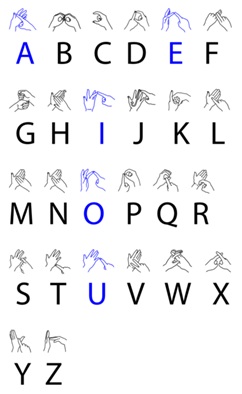Signs of Change: Regional and Generational Variants in British Sign Language
As societies change, so too do its languages. In the English-speaking world, we often make note of changes in language by recognizing the rise of new words, like “selfie,” and the repurposing of familiar words, such as “because.” It may not be a surprise, then, to learn that this “evolution” isn’t limited to the spoken word: sign languages can also change over time. In a recent PLOS ONE study, scientists examined regional variations within British Sign Language (BSL), and found evidence that the language is evolving and moving away from regional variation.
To assist in this undertaking, the authors used data collected and recorded for the British Sign Language Corpus Project. About 250 participants took part in the project, recruited from eight regions in the UK. In addition to hailing from different parts of the country, participants came from various social, familial, and educational backgrounds.
When the first deaf schools were established across the UK in 1760, there was little standardization in signing conventions. Consequently, depending on the school you were attending, schools sometimes taught pupils to use different signs to convey the same concepts or words. The authors posit that this lack of standardization may be the basis for today’s regionalism in BSL.
The participants were given visual stimuli, such as colors or numbers, and then asked to provide the corresponding sign, one that they would normally use in conversation. The researchers also recorded participants engaging in unscripted conversations, a more formal interview, and in the delivery of a personal narrative, all of which were incorporated into the authors’ study and analyzed.

In their analysis, researchers focused on four concepts: UK place names, numbers, colors, and countries. The participants’ responses to the visual stimuli were compared to with their recorded conversation to control for any confounding variables, or unforeseen social pressure to sign in a particular way. The responses were also coded as being either “traditional” or “non-traditional” according to the regional signing conventions.
Results indicated that age may play a role in whether a participant uses traditional or non-traditional signs. Particularly when signing for countries, about half the responses given by younger participants were non-traditional signs. In addition, some participants—young and old—explained that they changed the country sign they used as they grew older. The researchers posit that this may be due to changing definitions of political correctness, in which older, more traditional signs are now perceived to be politically incorrect.
The authors also found that age may also play an important role in the participant’s use of color and number signs. As was the case for signing countries, younger participants were more likely to use non-traditional signs, and older participants more likely to use traditional signs. The researchers noted that younger participants using signs non-traditional to their region seemed to be adopting signing conventions from southern parts of the country, such as London, or from multiple regions. In other cases, younger participants responded by signing the first letter of the word, such as ‘p’ for purple. The authors attribute this generational shift to the participants’ increased exposure to different signing conventions, ushered in by technological developments, such as the Internet, and increased opportunities for travel.
Changing social norms, technologies, and opportunities—these are no strangers to us by now. As the world changes, so too do the ways in which we communicate, verbally and physically.
Citation:Stamp R, Schembri A, Fenlon J, Rentelis R, Woll B, et al. (2014) Lexical Variation and Change in British Sign Language. PLoS ONE 9(4): e94053. doi:10.1371/journal.pone.0094053
Image 1: British Sign Language chart by Cowplopmorris, Wikimedia Commons
Image 2: Figure 3 from article

